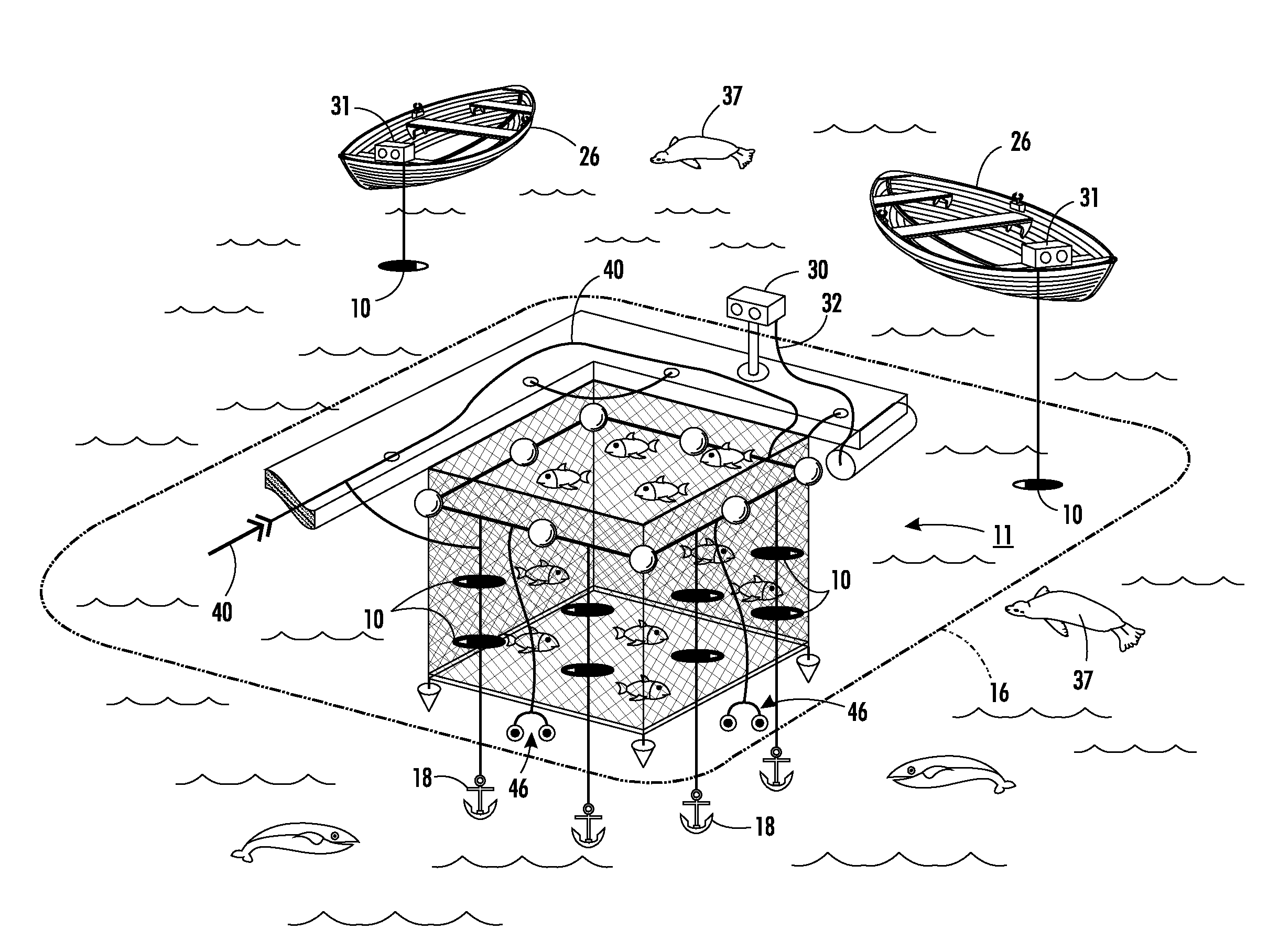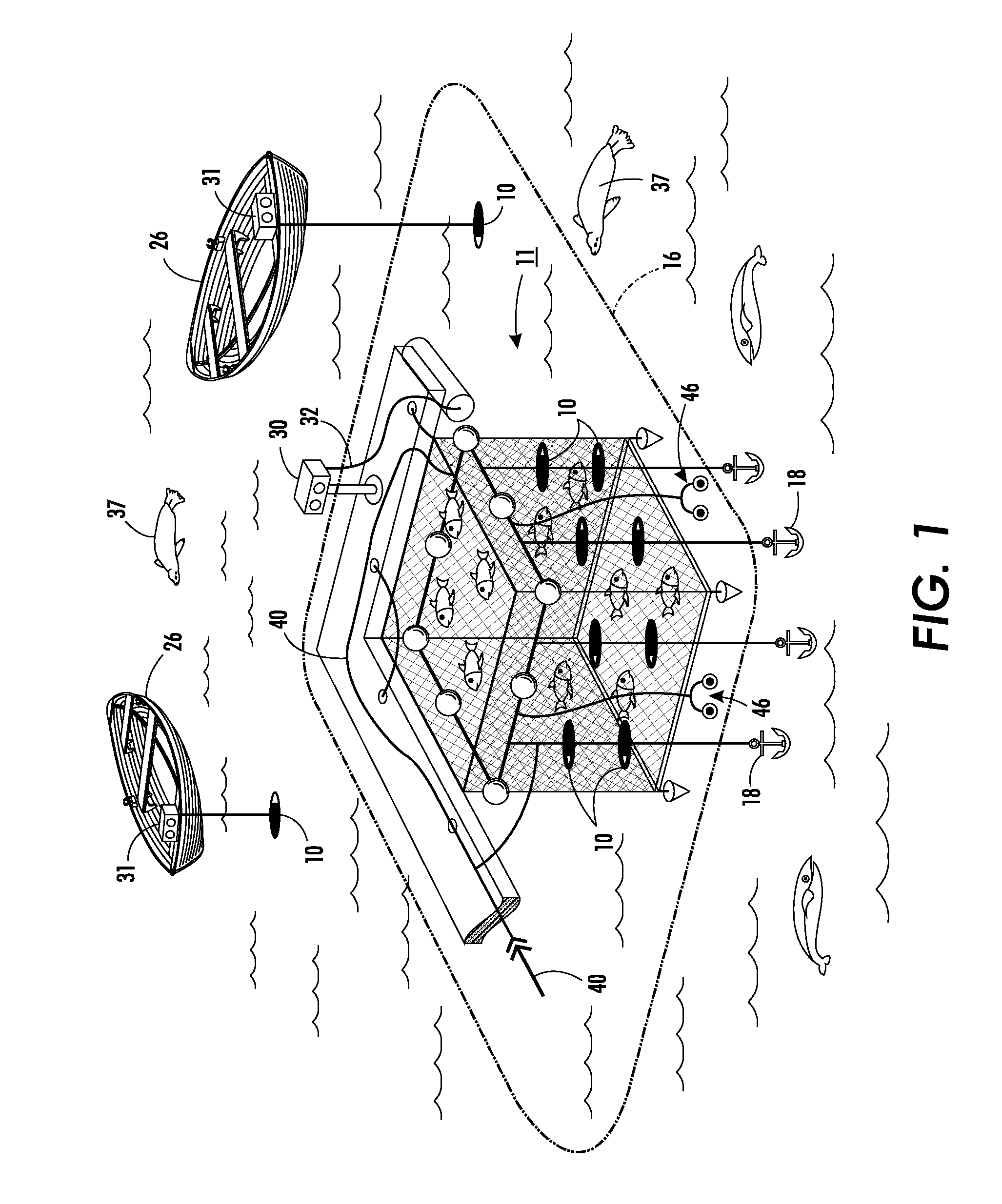Low frequency acoustic deterrent system and method
a low-frequency acoustic deterrent and low-frequency technology, applied in the field of acoustic impulse deterrent systems and methods, can solve the problems of marine mammals' damage to aquaculture facilities, fish stocks, recreational fishing, etc., and achieve low development cost and risk, not polluting the environment, and cost-effective
- Summary
- Abstract
- Description
- Claims
- Application Information
AI Technical Summary
Benefits of technology
Problems solved by technology
Method used
Image
Examples
Embodiment Construction
[0031]In describing various elements in relation to the embodiments disclosed herein, it will be appreciated that various alternative acoustic impulse sources may be employed in different situations. As used herein, the term fluid-power is intended to apply to air or gas (e.g., pneumatic) as well as liquid power (e.g., hydraulic) sources. Aspects of the deterrent system and method that are enabled by the disclosed embodiments include; (i) repeatability, (ii) controllability and (iii) scalability.
[0032]In order to provide a repeatable deterrent, the acoustic impulse sources should be able to operate over time, without significant degradation due to the hostile aquatic environment in which they are used. In order to be controllable the acoustic impulse sources are, as described below, controlled by, or respond to, a firing controller that determines a point in time when the sound sources are fired, as well as the manner and timing of firing, in order to produce the desired pulse(s) or...
PUM
 Login to View More
Login to View More Abstract
Description
Claims
Application Information
 Login to View More
Login to View More - R&D
- Intellectual Property
- Life Sciences
- Materials
- Tech Scout
- Unparalleled Data Quality
- Higher Quality Content
- 60% Fewer Hallucinations
Browse by: Latest US Patents, China's latest patents, Technical Efficacy Thesaurus, Application Domain, Technology Topic, Popular Technical Reports.
© 2025 PatSnap. All rights reserved.Legal|Privacy policy|Modern Slavery Act Transparency Statement|Sitemap|About US| Contact US: help@patsnap.com



